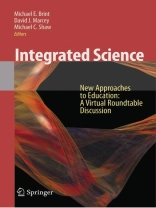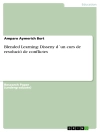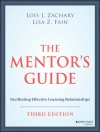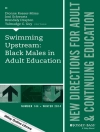Across science and engineering, new opportunities are unfolding at the convergence of traditional fields. To meet the demands for students with interdisciplinary education, new undergraduate curricula have emerged. Biomedical engineering, for example, builds upon foundations in biology, physics, chemistry and materials science coupled with engineering design principles.
In building successful interdisciplinary science programs, however, many questions must be addressed. Although many resources exist for developing and implementing new academic programs, there does not exist in a single volume that adequately address this important topic. Integrated Science: New Approaches to Education is a focused collection of essays addressing the myriad challenges associated with conceptualizing, developing, implementing and measuring the success of new undergraduate programs in interdisciplinary science and engineering fields. This book will provide an overview of this process drawn from a broad perspective of experts within their respective fields.
Tabella dei contenuti
Integrated Sciences: New Approaches to Education A Virtual Roundtable Discussion Springer Publications Edited by Michael Brint, David Marcey, Michael Shaw Preface PART ONE: THE PROMISES AND CHALLENGES OF INTEGRATED SCIENCE Question 1: In what ways can or should science and government be integrated? Al Gore, Vice-President, United States of America (1993-2001); Nobel Laureate copyright forthcoming) Bruce Alberts, Former President (1993 – 2005), U.S. National Academy of Sciences Question 2: What are the promises and challenges of scientific integration? Elias A. Zerhouni, M.D., Director, National Institutes of Health. James J. Duderstadt, President Emeritus and University Professor of Science and Engineering at the University of Michigan. PART TWO: THE INTEGRATION OF ACADEMIC SCIENCE AND INDUSTRY Question 3: Should business and industry create integrative partnerships with academic science? Stanley Aronowitz, Distinguished Professor of Sociology and Director of the Cultural Studies Program at the Graduate Center, City University of New York. David L. Kirp, Professor, Goldman School of Public Policy, University of California, Berkeley. Question 4: What are the institutional obstacles to the integration of academic science and industry? Hank Riggs, Founding President and Trustee, Keck Graduate Institute William A. Haseltine, President, William A. Haseltine Foundation PART THREE: THE IMPLICATIONS OF INTERDISCIPLINARY SCIENCE ON EDUCATION AND TRAINING Question 5: What are the long term implications of integration/interdisciplinary science on traditional disciplines and their professional associations (turf wars)? Steven Brint, Associate Dean and Professorof Sociology at the University of California, Riverside Paul Grobstein, Eleanor A. Bliss Professor of Biology, Bryn Mawr College Question 6: What are the implications of integrated science for liberal arts education and pedagogy at the undergraduate level? William Wulf, University Professor, University of Virginia, President Emeritus, National Academy of Engineering Donald Kennedy, President Emeritus at Stanford University. Question 7: Do the new directions in scientific training have an impact on developing a more diverse workforce? Rita R. Colwell, University of Maryland and 11th Director of the National Science Foundation Donald Kennedy, Bing Professor of Environmental Science and President emeritus at Stanford University. Question 8: What are the implications for training at the Master’s level? Rita R. Colwell, University of Maryland and 11th Director of the National Science Foundation Sheila Tobias, National Outreach Coordinator for the Professional Science Master’s (1997-2005) Question 9: What are the implications for training at the doctoral level? David Baltimore, Robert A. Millikan Professor of Biology at California Institute of Technology Chris M. Golde, Associate Vice Provost for Graduate Education, Stanford University H. Alix Gallagher, Senior Researcher, SRI International Thomas Cech, Nobel Laureate; President of the Howard Hughes Medical Institute, Distinguished Professor of Chemistry and Biochemistry, University of Colorado Gerald Rubin, Vice President and Director, Janelia Farm Research Campus, Howard Hughes Medical Institute Question 10: What are the architectural implications of integration? Robert Venturi, Pritzker Prize winner in Architecture and founding principal of the firm Venturi, Scott Brown and Associates. Claire M.
Circa l’autore
Michael E. Brint – After completing his undergraduate studies at the University of California and his doctorate at Oxford University, Michael Brint has been involved in developing interdisciplinary and multidisciplinary programs at Stanford University, the University of Virginia, and Kenyon College. The former Dean of the College of Arts and Sciences, Michael Brint is currently the Uyeno-Tseng Professor of International Studies and Professor of Political Science at California Lutheran University.
David J. Marcey – David Marcey received a B.A. in Biology from the College of Wooster and a Ph.D. in Biology from The University of Utah. His postdoctoral work was done at The Max-Planck-Institute for Developmental Biology in Tübingen, Germany and at the Howard Hughes Medical Institute in Salt Lake City, Utah. He was an associate professor at Kenyon College before joining the faculty of California Lutheran University as Fletcher Jones Professor of Developmental Biology. Marcey’s research in Drosophila developmental genetics includes studies of genetic control of tissue formation and the role of transposable elements in gene regulation.
Michael C. Shaw – Michael Shaw received a Ph.D. in Materials Engineering from the University of California, Santa Barbara, an M.S. in Ceramic Engineering from the Ohio State University, and a B.S. in Materials Science and Engineering from the University of California, Berkeley. He performed his post-doctoral studies at the University of Cambridge, England. He is currently Professor, Bioengineering and Physics; and Director, Center for Integrated Science and Bioengineering at California Lutheran University. Shaw’s research focuses on the underlying relationships between the microstructures and mechanical properties of both inorganic materials and living systems.












